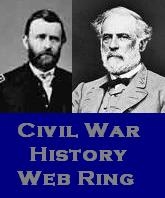 |
| From the Cornfield east of Miller's house looking northeast (1/19/13) |
During
the short winter days of January, I have been getting ready for the upcoming
year at Antietam. One book I am
spending a lot of time with is Volume 2 of Ezra Carmen’s Maryland Campaign. The outstanding editing by Tom Clemens
adds a great deal of clarity to Carmen’s manuscript. Every footnote is worth reading.
As
anyone familiar with Carmen knows, he copies much of his prose from Official
Record reports, magazine articles, and letters from participants of the
battle. But there are stretches
where you see the landscape and battle from his eyes and in his words.
Early
in volume two, Carmen spends much of chapter 12 (The Field of Antietam) describing
the terrain around the northern part of the battlefield. While some of his syntax is aggravating,,
pronoun use can mystify, and the sentences often run on making for a difficult
read, (maybe like this one), Carmen nevertheless delivers some very evocative
description of the roads, terrain, crops, and structures on the battlefield. Here is a sample:
“North of the cornfield was a grass field of nearly
40 acres of higher ground than the cornfield and upon which the Union batteries
were posted on the 17th. In that part of this field, bordering the
Hagerstown Road, stands the house of D.R. Miller, an apple orchard, north and
east of it, a garden in front, and in the southwest corner of the garden, close
by the road, a spring of delicious water, covered by a stone house. Beyond the field where are Miller’s house
and orchard, was another field, bounded on the north by the North Woods. South
of the cornfield and bounded by the Hagerstown road on the west and by the East
Woods and the Smoketown road on the east and south was a field of nearly 80
acres, most of it in luxuriant clover, some of it freshly plowed. In the East
Woods and West Woods and the cornfield and grass field between them, is where
the terrible struggle between the Union right and the Confederate left took
place-the most sanguinary part of the whole field.”
Sometimes
there is a tendency to jump over the early chapters of Carmen to get to the
meat of the action. Don’t do
that. It is worth it to read the
entire work thoroughly. For
someone like me who has been to this field many times, the careful reading of
Chapter 11 painted yet another picture and perspective that I had not seen
before. I read this chapter last
week. Today I was on the field and
the imagery of Carmen’s words came back to me as I viewed this ground
today. Pictures are worth a
thousand words but sometimes a thousand words, carefully and perceptively read
can produce an image that stays with us in an even more powerful way.











